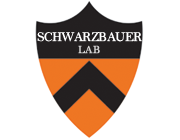Nucleation of fibronectin fibril assembly requires binding between heparin and the 13type III module of fibronectin.
Type
Fibronectin (FN), a critical component of the extracellular matrix, is assembled into fibrils through a cell-mediated process. Heparan sulfate (HS) binds to the III module of FN and fibroblasts lacking this glycosaminoglycan exhibit reduced FN fibril assembly. To determine if HS depends on III to control FN assembly, we deleted both III alleles in NIH 3T3 cells using the CRISPR-Cas9 system. ΔIII cells assembled fewer FN matrix fibrils and less DOC-insoluble FN matrix than wild type cells. Little if any mutant FN matrix was assembled when purified ΔIII FN was provided to Chinese hamster ovary (CHO) cells, showing that lack of III caused the deficiency in assembly by ΔIII cells. Addition of heparin promoted the assembly of wild type FN by CHO cells, but it had no effect on the assembly of ΔIII FN. Furthermore, heparin binding stabilized the folded conformation of III and prevented it from self-associating with increasing temperature suggesting that stabilization by HS/heparin binding might regulate interactions between III and other FN modules. This effect would be particularly important at matrix assembly sites where our data show that ΔIII cells require both exogenous wild type FN and heparin in the culture medium to maximize assembly site formation. Our results show that heparin-promoted growth of fibril nucleation sites is dependent on III. We conclude that HS/heparin binds to III to promote and control the nucleation and development of FN fibrils.

